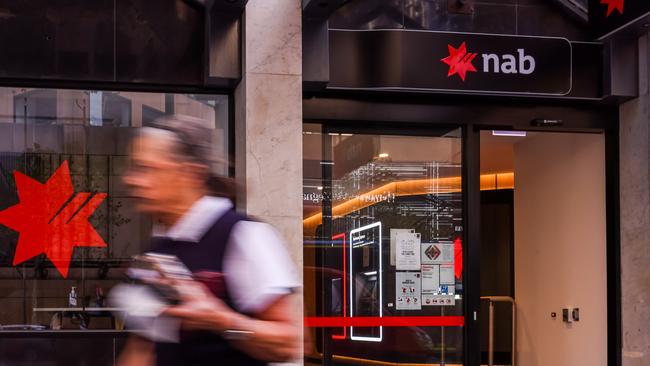You solve one problem and then do the legwork and solve the next one and then the next. You keep going and if you solve enough problems – as Damon’s “Martian” did – you survive and get to come home.
Cooke, the chief executive of fallen casino empire Star Entertainment might have his feet planted on the ground but plenty of problems are still ahead of him.
Resolutions of two big ones are ahead of him in the coming year, which means Star might just be able to take a big step towards getting back home.

In just over 10 months, Cooke has tackled more existential problems at Star than most CEOs see over their professional career.
But the former Tyro and Tattersalls boss knew he wasn’t in for an easy ride when he took charge of the crashing Star mid last year when the casino was up to its neck in regulatory mire in the two states it operated.
Shortly after Cooke began, Star was deemed unsuitable to hold a casino licence in NSW and placed on probation in Queensland, and slapped with heavy fines for its year of flouting rules and turning a blind eye.
This was quickly followed by a damning lawsuit from financial crimes regulator Austrac.
Amid all this Star was still reeling from Covid-19 lockdowns, while its previous management and board had been cleared out. It was suffering cost blowouts on its $2.8bn Queen’s Wharf casino development under way in Brisbane as well as a collapse in international tourism.

Then the big one coming out of left field was a string of stinging new gaming taxes in NSW that threatened to crush future returns.
Just last week Cooke was hit with a new problem. His builder, Multiplex, is suing Star over cost overruns at Queen’s Wharf which is scheduled to open next April.
“There are a lot of challenges in the business which don’t I don’t deny,” Cooke tells The Australian.
“But it is very much just step by step and moving forward working through these challenges systematically.”
He says the NSW tax was probably the “biggest curveball” that Star had to face and ultimately months of talks with the new Minns Labor government saw the initial proposals watered down in exchange for protecting jobs at the Pyrmont site.
Next challenge
This month Star reached in-principle agreement to amend the NSW casino duties. Critically it has been given a seven-year delay for the full scale of new pokie duties, although there is an immediate step-up in a range of rebates as well as a super gaming levy applied to annual revenue above $1.12bn.
“I’m pleased that we’ve got a sensible outcome there, which protects the jobs in the team of the New South Wales operation but also protects the viability of the business”, Cooke says. He says the resolution of gaming taxes was something “critically important and provides some certainty” for the next challenge looming: Refinancing Star’s $1.1bn in debt. An $800m capital raising undertaken by Cooke earlier this year has already taken significant pressure off Star’s balance sheet, but there are more than $500m in debt facilities expiring in 2025, so Cooke wants to refinance the lot to give Star a more sustainable repayment profile.
The other big problem coming for Star and a big unknown is the size of an expected fine from Austrac, after it agreed to settle the claims around money laundering. Star has set aside $150m for a fine, although this is likely to be more around the $300m level. Earlier this year the bigger Crown settled with Austrac for $450m.

Cooke was speaking as Star delivered a monster loss of $2.43bn for the year after writing down its three main assets – Sydney, the Gold Coast and Treasury Brisbane. The bulk of the charge was due to the reset of expected earnings from the gaming tax in NSW, while other regulatory measures to lift compliance will impact earnings over time.
After the unknown of Austrac fine, but big question for investors is whether Star has hit the bottom and there’s a sustainable casino business underlying. With the tight regulatory leash, returns won’t be anything like the old days but there were signs of life in a troubled set of numbers.
Revenue across its three main sites in the first two months of the financial year was up between 2 per cent and 5 per cent on the June quarter. Meanwhile underlying earnings for the year were slightly ahead of expectations.
This was the surest sign yet Star had stabilised after years of a downward spiral, prompting a rare rally taking Star’s shares up 2.2 per cent to 96c each. Before Covid-19 and regulatory blow-ups hit, Star was trading closer to $5.
Cooke says the casino business is under pressure as the business is being repositioned to meet higher regulatory standards. But that is important for the longer term future of Star.
“It’s about actually getting the regulatory framework and the controls right, which we’re all working on. And that journey is a couple of years of remediation and reforming”.
“These businesses are key tourism assets. They bring people to Sydney, to the Gold Coast, to Brisbane. I’m still optimistic that they’re powerful businesses”.
“But we’ve got to get the settings right, which is what we’re focused on. And that’s that has to be the number one priority to get that piece right before you start trying to expand the operations,” Cooke says.
APRA’s test
As National Australia Bank pushes ahead with the final stage of its latest $1.25bn hybrid share offering, lingering questions coming out of Credit Suisse’s demise this year still hang over Australia.
The nation’s banking regulator is keen to stress test how tier-one hybrids – a key source of funding for banks – behave in the event of a “too big to fail” crisis.
APRA chairman John Lonsdale is preparing to consult with the banks and broader market from next month about whether so-called hybrid shares really do what they promise and convert from bonds into equity in the case of a bank getting into financial trouble. They are part of the shock absorbing ability of the financial system, helping to absorb heavy losses and reduce the need for government support in a crisis.

Bank hybrid instruments are highly popular among Australians, particularly among self-managed super funds. While they look like shares, they offer steady bond-like returns that offer some protection from inflation in that they are linked to changes in the cash rate. In NAB’s case, the notes pay a quarterly distribution with a “margin” set at 2.8 per cent above the benchmark bank bill rate.
But the hybrid shares, known as additional tier-one capital, came under focus in an unexpected way through the forced takeover of Swiss bank Credit Suisse by its rival UBS earlier this year.
Credit Suisse’s hybrids were wiped out, with their $US17bn ($26.4bn) value written down to zero during the emergency takeover co-ordinated by Swiss regulators. This left hybrid holders with nothing, whereas holders of Credit Suisse equity got some UBS shares – although a tiny amount – as part of the takeover.
Law of the jungle
At the time, markets were spooked, not just in Australia, because the move threatened to rewrite the assumed rules around hybrids that banks heavily rely on to help reinforce their balance sheets in case they run into trouble. It up-ended the assumed laws of the financial jungle that bondholders rank ahead of equity in the event of a collapse.
Following the Credit Suisse rescue, the European Central Bank quickly clarified its position on hybrids, as did Australia’s bank regulator.
Lonsdale says “Australians can have a lot of confidence in the (financial) system”, but there are lessons to be learned from Credit Suisse around hybrids that deserve a closer look.
“That has sparked quite a lot of introspection among local regulators on the use of hybrids,” he says.
Lonsdale says the regulator’s paper will look at whether hybrids will operate as intended or if there were any other questions that need to be resolved if the bank found itself going into stress.
“When you think about who’s actually holding these instruments in Australia – I think we are unique. We have a very large holding of AT1 instruments by retail investors. And so there’s a range of issues around that,” Lonsdale says.
In addition to NAB’s issue, Commonwealth Bank raised $1.55bn from its PERLS issue in May. ANZ also tapped investors for $1bn, although that was in February, before Credit Suisse hit rough waters a month later.
The NAB prospectus for its capital notes ranks the hybrids ahead of equity. It says NAB must immediately convert all shares into equity if the bank hits severe financial difficulty. APRA would determine the conversion under a “non-viability trigger event”, a point likely to arise just ahead of the insolvency of the bank.
Meanwhile, Lonsdale says even with the sharp run-up in the cash rates the level of stressed mortgages held by Australian banks were very low, although there were signs they were increasing from a low base. One area to watch was non-bank lenders, these don’t come under APRA’s remit, but they are being examined by the powerful Council of Financial Regulators, losses here were running ahead of major banks.
johnstone@theaustralian.com.au






Some days Robbie Cooke must feel a little like the Matt Damon character in Hollywood blockbuster The Martian. Ultimately, when everything goes south it all comes down to problem solving.